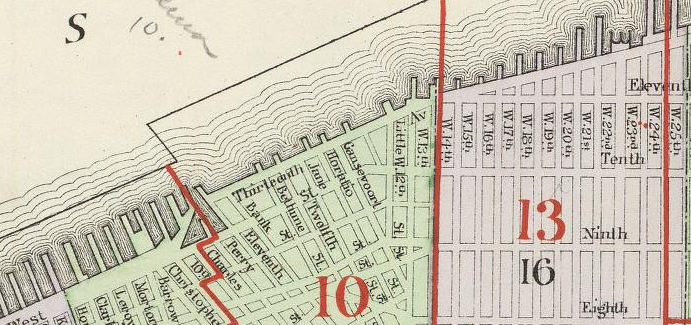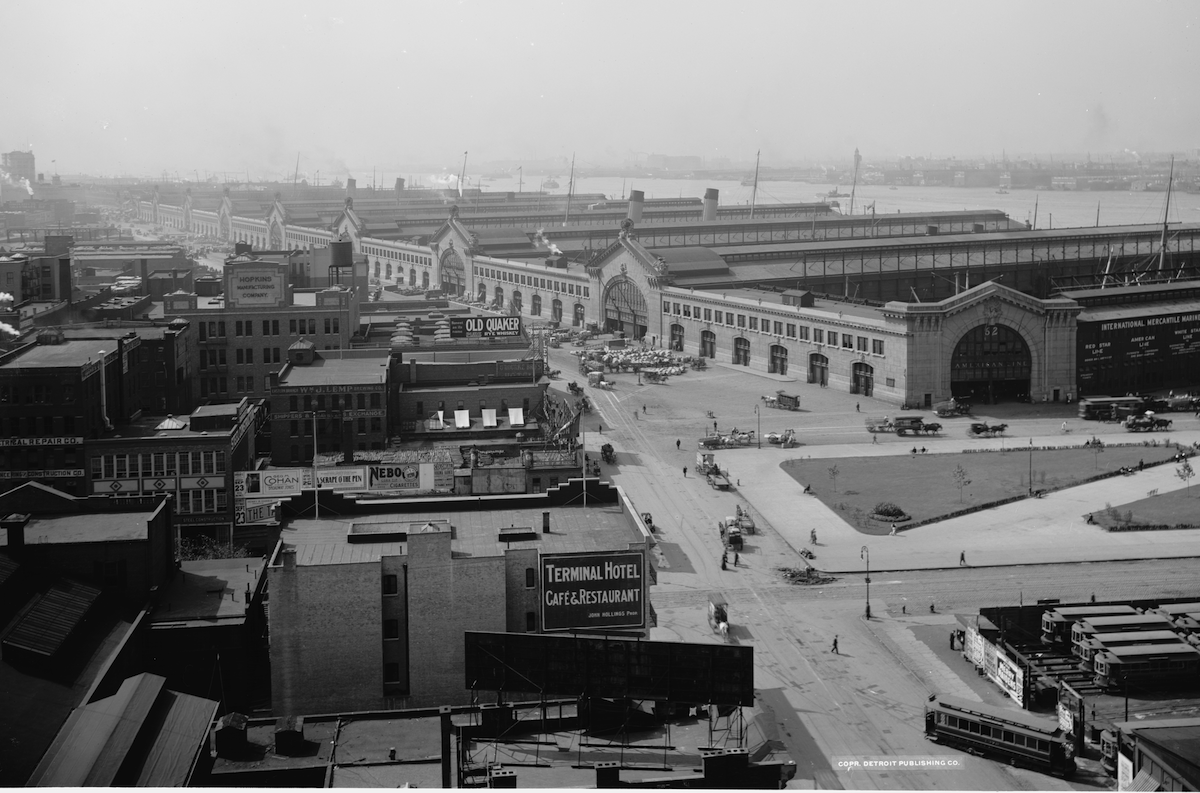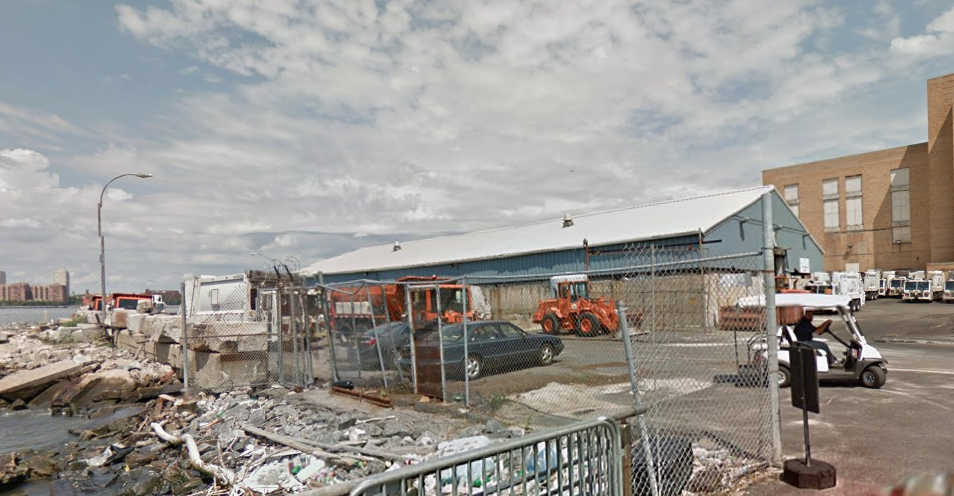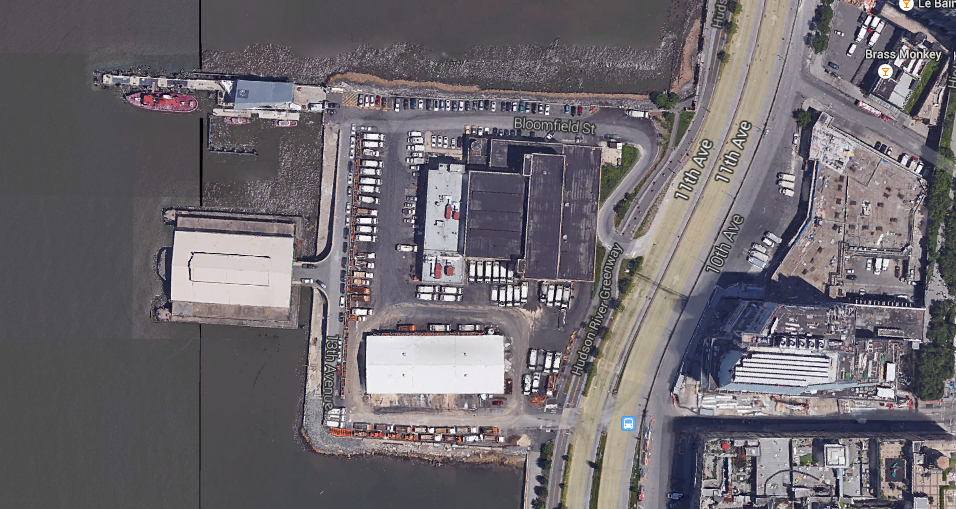After all, the port of New York was booming at an exponential rate. In his 2014 book Gotham Unbound, which looks at the way New York has transformed the ecology around it, author Ted Steinberg explains:
Results tabulated for a day in 1824 showed a total of 324 vessels weighing anchor off the city’s shores. But a comparable day in 1836, a stunning 921 ships were tied up along the East River alone. Several hundred more docked on the Hudson River.
The city needed more shoreline, and it would built it along the Hudson. Originally, Steinberg says, the idea was to have 13th Avenue run all the way up to 135th Street filled in with extra dirt from the flattening of the upper parts of Manhattan.
And for two decades, it looked as though the plan would work — just as it had elsewhere on the island. In a New York Times article from 1883 quoted on the 13th Avenue blogspot, we get a glimpse of the colourful and busy — though poverty-stricken — life of this glorified industrial alley:
The bare bones of the City’s development were present in the form of lumber piles stacked “in the true Pisa fashion.” At night, the avenue was nearly empty, and the Times noted that, “[t]he police avoid it scrupulously.” Corner watering-holes, like Barney Goodwin’s bar of illegal cockfights and Henry Houlston’s saloon of brawling longshoremen, lit up the Thirteenth Avenue nights as much as the avenue’s frequent fires.
Alas, Steinberg says in Gotham Unbound, 13th Avenue was just a “pipe dream.” Not only did a recession halt development, but the demands of a new breed of ships started to encroach upon it. Here’s what remained according to the the 1891 Bromley map from David Rumsey’s excellent archive:

As larger liners like the Lusitania and even the Titanic began to take to the sea towards the end of the 19th century, they required longer piers. New York couldn’t build them without the piers protruding too far into the Hudson. So existing chunks of infill were sunken once again, in order to build longer piers for this new breed of mega-liner.

New Chelsea Piers, via the Library of Congress.
One block of the lost avenue did survive, though. It’s known as Gansevoort Peninsula, which you might recognise as the odd little pier that houses a run-down Department of Sanitation building. The Villager reports that a stalled Bloomberg-era plan would have turned it into the city’s primary collection point for recyclables to be offloaded from the city to barges on the river. Here’s what it looks like today:


To anyone driving up 11th Ave, it’s just another unremarkable post-industrial pier. Who knew it was a vestigial organ from a time when New York was a port city boom town that couldn’t expand its borders fast enough?
Picture: Detail of a 1873 map of New York in David Rumsey’s archive.
